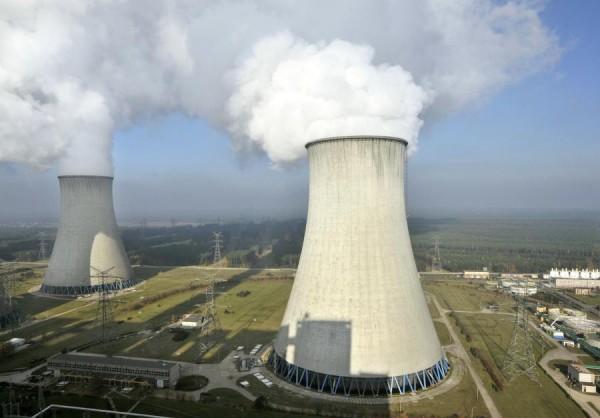
Photo: Bloomberg
From the time that Poland was selected as the host country for the next round of the United Nations climate change negotiations this upcoming November, there have been many skeptics. Poland is one of the nations most reliant on coal, the most carbon intensive of the fossil fuels, for its electricity – especially in Europe. Poland consumes 77 million tons of coal per year, the tenth largest amount in the world, and it is reliant on coal for 92 percent of its electric power, according to the World Coal Association. Not only that, but the nation is one of the major global coal exporters.
Despite the importance that coal plays to drive Poland’s expanding economy, Poland agreed to be party to the EU’s target to reduce greenhouse gas emissions by 20 percent from 1990 levels by 2020 and the long-term target of reducing emissions by 80-95 percent by 2050 from 1990 levels. Poland, however, was the lone dissenter blocking attempts to increase the short-term target to 25 percent by 2020, angering its neighbors. The nation believes a change can cause billions of dollars in economic losses and is fervent in its decision.
Just the past week, the EU General Court dismissed a motion by Poland claiming the EU’s Emissions Trading Scheme (ETS), which allocates greenhouse gas emission allowances with the goal of combating climate change, discriminates against nations that have power sectors dominated by coal and in effect would harm the economy. The court’s decision “rejects Poland’s argument that the contested decision would decrease the competitiveness of companies in member states whose production is linked mainly to coal as a fuel.” Poland believed the targets are unjust arguing they were conceived for countries more dependent on natural gas – a less carbon intensive fossil fuel.
Poland now has the right to appeal to the European Court of Justice. The ministry of environment issued a statement saying it needs to analyze the verdict before proceeding with further action. If the ruling were to be overturned, the existing structure of the ETS would need to be overhauled.
The ETS, which began in 2005, on a whole has performed below expectations. The price for carbon per ton has bottomed below €3 ($4) down from a high of €32 ($42). With such a depressed market, there is little incentive for utilities to switch generation. An assortment of analysts and other interests believe the market needs to reach above €20 ($26) per tonne in order to push utilities to convert to less polluting sources of energy. The price has been low due to a surplus of allowances in large part due to the ongoing struggling economy.
The official Polish Government Energy Policy Strategy states coal will remain the key element of the country’s energy security until at least 2030. Marcin Korolec, the Minister of the Environment, believes the country will begin to lessen its dependence on coal through expanded energy efficiency, initiating nuclear power, and increasing the share of renewable energy and natural gas in the national energy portfolio.
Shifting gradually from such an entrenched bulwark of the economy lends to substantial factors to weigh with various interpretations of potential outcomes. For example, The World Bank report, “Transition to low-emissions economy in Poland” stated that the EU climate agreement would cost Poland one percent of its GDP every year until 2030, and two percent of its GDP each year to 2040. However, Poland’s Climate Coalition released its own report stating if climate policy was financed properly, the cost of reducing greenhouse gas emissions by 47 percent by 2030 to total no more than one to two percent of GDP.
When considering adjusting its energy policy, Poland intends to ensure its energy security. The nation still operates Soviet-era coal-fired power plants, which will need to be updated or replaced. In fact, more than 50 percent of the power stations in Poland are over 25 years old, and approximately 25 percent have been in operation for over 30 years, according to the World Coal Association. This can be viewed as an opportunity to build new, more efficient coal power plants or build plants operated by a different energy source. Currently, Poland would be reliant on Russia for an increase of natural gas leaving an uncomfortable sense of dependence on a nation with a long history of conflict. Poland does have vast shale gas opportunity, but it is many years away from development. In addition, the first nuclear power plant is scheduled for 2022.
In the meantime, Poland’s largest mining companies, Kompania Węglowa, Katowicki Holding Węglowy and Jastrzębska Spółka Węglowa – the EU’s largest coking coal producer — are going about business as usual. The three companies, which the government all owns a part off, will spend about zł.7 billion ($2.2 billion) on investments in the years 2013-2015, according to Deputy Economy Minister Tomasz Tomczykiewicz. He continued to say about 75 percent of this money will be spent on maintaining production levels through drilling or the purchase of mining equipment. Investments in the mining sector have surpassed zł.2 billion ($630 million) annually since 2008 and in 2012, they were an estimated zł.3.7 billion ($1.16 billion).
Despite many externalities, new technologies and falling prices of renewables, there appears to be little reason to believe Poland will not stick to its guns in the near term and continue to oppose stricter climate regulations and fend off calls to phase out its coal dominant power supply.